Growth Mindset in Business: Drive Innovation And Collaboration
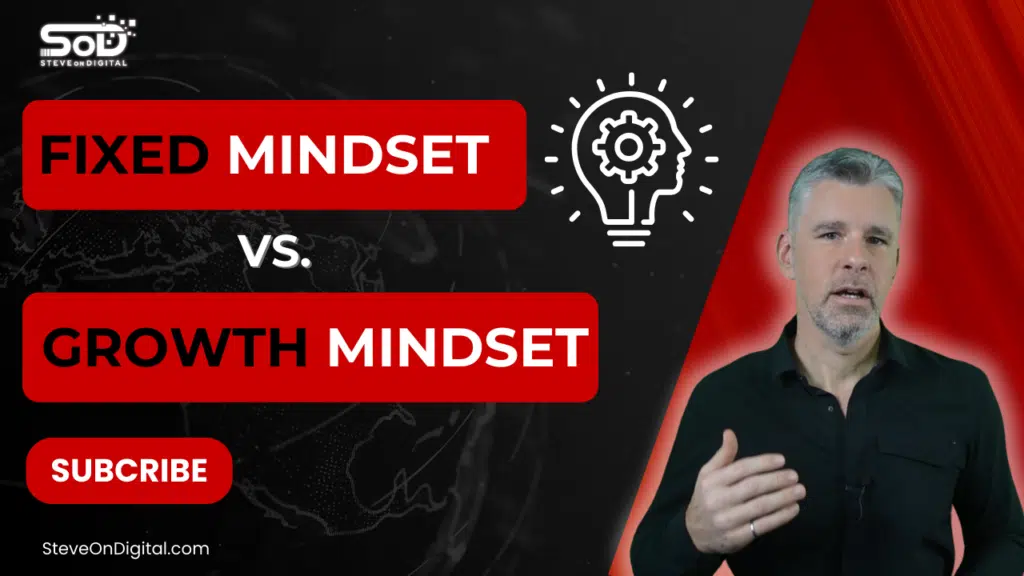
A growth mindset in business means believing that abilities and intelligence can improve through effort and learning. This approach fosters innovation, adaptability, and long-term success by encouraging continuous learning and improvement. Carol Dweck’s decades of research on growth mindset have shown how this approach can significantly influence organizational culture, leading to innovation and collaboration in the workplace. I’ve seen firsthand how adopting a growth mindset can transform a business. By focusing on challenges as opportunities, fostering team development, and promoting a culture of continuous improvement, businesses can stay competitive in a rapidly changing market. Let’s explore how this powerful mindset can drive success and innovation in your organization. I’m Steve, a digital transformation expert with a strong background in electrical engineering, an MBA, and a master’s in Project Management. I excel at helping SMEs navigate the digital landscape with practical insights. Let’s begin! Understanding Growth Mindset in Business A growth mindset in business is essential for fostering innovation, adaptability, and long-term success. By focusing on continuous learning and improvement, businesses can navigate challenges more effectively and stay competitive in a rapidly changing market. Definition and Origin of Growth Mindset The concept of a growth mindset originates from the work of Stanford University psychology professor Carol Dweck. She defined it as the belief that abilities and intelligence can be developed through dedication and hard work. This contrasts with a fixed mindset, where individuals believe their talents are innate and unchangeable. Growth Mindset vs. Fixed Mindset A growth mindset believes that intelligence and skills can improve with effort and persistence. In contrast, a fixed mindset believes that abilities and intelligence are static and unchangeable, which may hinder an individual’s potential. This fundamental difference impacts how individuals approach challenges and learning opportunities. Those with a growth mindset are more likely to embrace new challenges and view failures as opportunities to grow, whereas those with a fixed mindset may avoid challenges for fear of failure. Aspect Growth Mindset Fixed Mindset Belief Abilities can be developed Abilities are static and unchangeable View on Challenges Embraces challenges as opportunities to grow Avoids challenges due to fear of failure Response to Failure Sees failure as a learning opportunity Sees failure as a limit to abilities Effort Believes effort is essential for mastery Believes effort is fruitless if one lacks talent Learning Continuous learning and improvement are valued Avoids new learning opportunities The Role of Growth Mindset in Business Success Adopting a growth mindset can lead to significant long-term benefits for businesses. A growth mindset views intelligence, abilities, and talents as qualities that can be developed through effort and persistence. Companies that encourage a growth mindset often see increased innovation, better team development, and improved employee performance. By fostering an environment where continuous learning and improvement are valued, businesses can better adapt to changes and overcome obstacles. Key Characteristics of Growth Mindset Several traits define a growth mindset, making it a critical aspect of business success. Characteristic Description Embracing Challenges Views challenges as opportunities for growth and learning Effort and Persistence Recognizes that hard work and dedication are essential for success Learning from Mistakes Understands that mistakes are valuable learning opportunities Continuous Improvement Focuses on ongoing development and betterment Open to Feedback Welcomes feedback and uses it to improve Embracing Challenges A growth mindset views challenges as opportunities for growth and learning. In business, this means taking on new projects and exploring uncharted territories without fear of failure. By embracing challenges, businesses can innovate and stay ahead of the competition. Effort and Persistence Effort and persistence are crucial in overcoming obstacles and achieving success. A growth mindset acknowledges that hard work and dedication are essential components of progress. This approach helps businesses push through tough times and continue to grow. Learning from Mistakes Mistakes are valuable learning opportunities. A growth mindset encourages individuals to analyze their failures, understand what went wrong, and apply those lessons to future endeavors. This attitude helps businesses improve and avoid repeating past errors. Implementing Growth Mindset in Organizations Fostering a growth mindset within an organization requires practical steps and strategies. Leadership and Growth Mindset Leadership plays a pivotal role in promoting and sustaining a growth mindset culture. Leaders must model growth mindset behaviors, such as embracing challenges and learning from failures. By doing so, they set a positive example for the rest of the organization. Developing a Growth-Oriented Company Culture Creating a growth-oriented company culture involves promoting continuous improvement and innovation. This can be achieved by encouraging employees to take risks, experiment with new ideas, and share their insights and experiences. Training and Development Programs Implementing training programs helps employees develop new skills and perspectives. Training programs can help employees gain new perspectives by engaging in networking, sharing knowledge, and problem-solving with others. Providing opportunities for learning and growth ensures that employees stay engaged and motivated. These programs can include workshops, seminars, and online courses focused on developing a growth mindset. Benefits of Growth Mindset in Business Adopting a growth mindset in business brings a multitude of advantages. From fostering innovation to improving employee satisfaction, the benefits are extensive and impactful. Increased Innovation and Creativity A growth mindset fosters a culture of innovation and creativity by encouraging employees to think outside the box. This mindset drives individuals to explore new ideas and perspectives, leading to groundbreaking solutions and advancements. For instance, a company that values innovation can adapt quickly to market changes and stay ahead of competitors. According to a study by PwC, 60% of CEOs believe that creativity is the most important leadership quality for success in business. Enhanced Team Development Embracing a growth mindset positively impacts team development by promoting collaboration and continuous learning. A collaborative work environment, supported by leadership, encourages trust, innovation, and effective communication among employees. Teams with a growth mindset are more likely to embrace challenges together, leveraging each other’s strengths to achieve common goals. This collective effort leads to improved team dynamics and higher overall performance. From my experience, fostering a growth mindset
Dispelling the “I Am Too Old” Myth When Implementing Technology
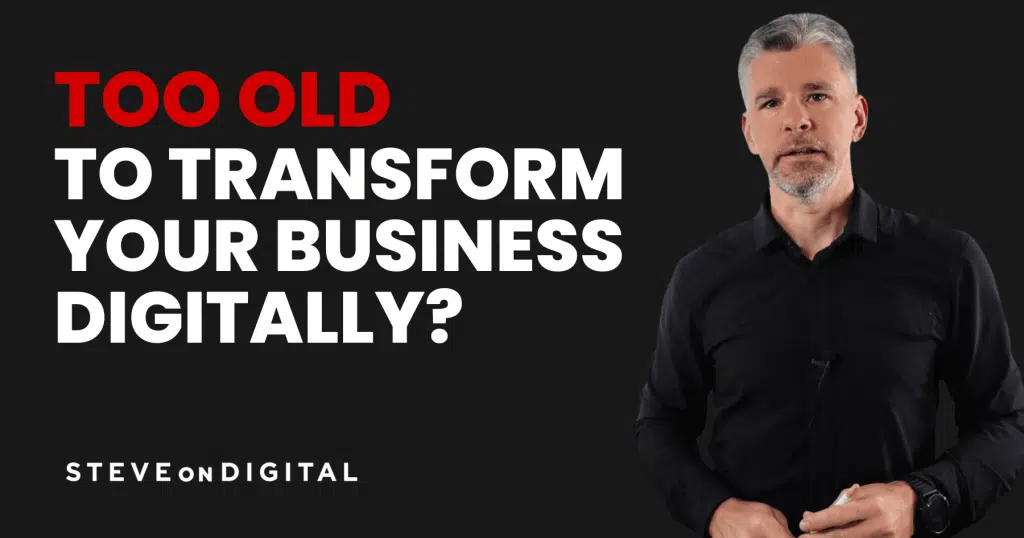
Ever think, “I’m just too old to learn new tech?” Is your solution to rely on younger people who you assume can navigate a digital transformation better than you can, at your age? Yes, I’ll give you that: millennials were born with technology surrounding them. But you have something younger people don’t have: business acumen. So, instead, team up with younger people, both sharing your respective knowledge so that the tech that is implemented responds to the business’s strategic needs. This requires continuous learning and a growth mindset. First of all, the idea that: being “too old” hampers your ability to comprehend and utilize technology is a misconception. It is a limiting belief, as age should never be a barrier to learning or adapting to new tools. Technology is designed to be intuitive and user-friendly, accommodating individuals from all generations. As a virtual CIO, I am a daily witness to entrepreneurs and executives leading successful digital transformations within their organizations. By recognizing that age carries no inherent disadvantage, business professionals can break free from this limiting belief and embrace technology with enthusiasm and curiosity. It’s also crucial to understand that technological advancements are not limited to a particular age group. The pace of innovation is ever-accelerating, and it demands a mindset of lifelong learning. By adopting a growth mindset, you, as a business professional, can actively seek opportunities to expand your technological literacy. There are so many online resources, courses, and workshops readily available to help individuals of all ages enhance their digital skills. Cultivating a culture of continuous learning within the workplace can foster an environment that encourages everyone to explore and adopt new technologies, regardless of their age or experience. Implementing technology successfully in a business context often requires a collaborative effort. Instead of succumbing to the belief that age inhibits understanding, business professionals can leverage intergenerational collaboration as a powerful tool. Younger employees can provide insights into emerging technologies, while seasoned professionals can contribute their industry expertise and critical thinking skills. By fostering a culture of collaboration and knowledge sharing, organizations can tap into the collective strengths of their workforce, bridging the gap between age groups and facilitating the successful integration of technology. The fear of the unknown can be a significant factor contributing to the belief that you are “too old” to understand technology. However, it’s important to recognize that fear is often unfounded and can be overcome. Embracing a trial-and-error approach, asking questions, and exploring technology in a supportive environment can make you more confident in using new applications and also dismantle the belief that age poses a barrier to technological proficiency. The idea that being “too old” to understand technology is a limiting belief that holds no basis in reality. By embracing a growth mindset, cultivating a culture of continuous learning, fostering collaboration, and seeking support, you can overcome this misconception and leverage technology to drive success in your organizations. Age should never be seen as an impediment, but rather as an asset that brings diverse perspectives and experiences to the table. By debunking this myth, you are empowered to embrace the limitless possibilities technology offers, regardless of age. You want to know how to create YOUR IT Roadmap in just a few steps? Get the Infographic: Creating YOUR Digital Roadmap
Skills Of A Successful Digital Leader: Do You Have What It Takes?

Digital leadership skills are crucial for navigating the modern business landscape. A digital leader must possess strategic thinking, innovation, and effective team management abilities. These skills enable leaders to implement digital strategies, manage technological changes, and lead teams successfully. The role of the Chief Digital Officer (CDO) is pivotal in digital leadership within organizations. However, the CDO’s responsibilities can sometimes create a silo effect, isolating digital initiatives from other business operations. In this guide, I will explore the essential skills every digital leader must have. Drawing from my personal experience and industry insights, I’ll provide practical advice on how to excel in digital leadership. Whether you are a small business owner or aspiring leader, this comprehensive guide will help you thrive in the digital age. I’m Steve, a digital transformation expert with a strong background in electrical engineering, an MBA, and a master’s in Project Management. I excel at helping SMEs navigate the digital landscape with practical insights. Let’s begin! Overview of Digital Leadership Digital leadership involves guiding an organization through the complexities of digital transformation, leveraging technology to drive business success. Effective digital leaders are not only tech-savvy but also skilled in strategic thinking, innovation, and team management. A digital transformation leader plays a crucial role in guiding organizations through significant changes, emphasizing essential skills such as inspirational leadership, strategic planning, and the ability to inspire teams toward a digital-first mindset. Importance of Digital Skills for Leaders In the digital age, leaders must possess a diverse set of digital skills. These skills enable them to implement digital strategies, manage technological changes, and lead their teams effectively. According to a study, 70% of new leadership skills are required to manage digital transformation successfully (DigitalDefynd). Successful digital leaders guide teams through digital transformation by fostering autonomy and open communication. Skill Description Strategic Thinking Ability to set and achieve strategic goals in a digital landscape. Innovation Fostering creativity and implementing innovative solutions to challenges. Team Management Building, leading, and motivating effective digital teams. Data Analysis Leveraging data-driven insights for informed decision-making. Communication Clear and effective communication with teams and stakeholders. Adaptability Embracing change and staying current with emerging technologies. Visionary Thinking Transformative Vision A transformative vision in the digital world is crucial for understanding market trends and the necessity for organizations to adapt to continuous changes. Digital leaders must be adept at problem-solving within a digital context. For example, during my tenure, I’ve seen how a clear vision can drive successful initiatives and help businesses adapt to market changes. Forward-Looking Perspective Setting clear objectives and strategies is essential for any digital leader. Developing a digital roadmap helps guide the team towards achieving long-term goals. According to Gartner, 72% of data and analytics leaders are heavily involved in their organization’s digital transformation, emphasizing the need for a strategic approach (Exploding Topics). Technology Understanding Digital Literacy Being literate in digital technologies is vital. This includes understanding how different technologies work and their potential impact on business processes. Past experiences with various technologies enhance a leader’s capability to drive digital initiatives. Adapting to New Technologies Keeping up with emerging technologies is crucial. Integrating new technologies into business processes can significantly improve efficiency and productivity. For instance, 45% of organizations are scaling up their cloud capabilities to support digital transformation efforts (Digital Adoption). Change Orientation Open-Mindedness Embracing change and fostering a growth mindset are critical traits for digital leaders. Encouraging team innovation and adaptability helps navigate the challenges of digital transformation. Effective leaders are those who inspire their teams to embrace new ideas and approaches. Managing Digital Transformation Leading successful digital transformations involves strategic planning and execution. Overcoming common challenges in digital change requires a leader to be proactive and resilient. Despite aligned leadership, 70% of digital transformation projects fall short of their goals, highlighting the need for robust change management strategies (Fit Small Business). The Chief Transformation Officer (CTO) plays a crucial role in driving the digitization of processes, transforming traditional workflows into more efficient digital operations. Leadership Skills Strong Decision-Making Effective decision-making is a cornerstone of successful digital leadership. As a digital leader, I understand the need to make pragmatic and focused decisions that drive the business forward. It’s essential to evaluate all available data, consider the potential outcomes, and choose the best course of action. According to DigitalDefynd, strategic thinking leaders achieve 33% more effective outcomes, highlighting the importance of clear and confident decision-making (DigitalDefynd). Employee engagement and clear communication are vital components of successful digital transformation, ensuring teams are equipped and informed throughout the digital journey. Leading with clarity and confidence instills trust and motivation in your team. When your team understands the decisions being made and the reasons behind them, they are more likely to buy into the vision and work towards common goals. Clear communication of decisions ensures everyone is on the same page, reducing confusion and increasing efficiency. Team Collaboration Building and leading effective digital teams is critical in the digital age. A strong team can achieve great things, especially when they work well together. I’ve found that fostering a culture of collaboration and open communication helps teams tackle complex tasks more effectively. The rise of remote work has increased the importance of strong virtual team management, with remote leadership surging by 80% since early 2020 (DigitalDefynd). Enhancing team communication and cooperation involves implementing tools and practices that facilitate seamless interaction. Digital tools like Slack, Microsoft Teams, and Asana can help streamline communication and project management. Effective leaders use these tools to ensure that team members are always connected and informed, which is essential for maintaining productivity and achieving strategic goals. Tool Purpose Slack Facilitates real-time communication and collaboration among team members. Microsoft Teams Combines chat, video meetings, and file collaboration in one platform. Asana Manages tasks, projects, and workflows for teams. Trello Visualizes project progress using boards and cards. Strategic Thinking Strategic Goals Setting and achieving strategic goals in a digital landscape requires a forward-thinking approach. As a digital leader, I prioritize aligning digital strategies
Why Management Support Is Vital For Digital Transformation Success
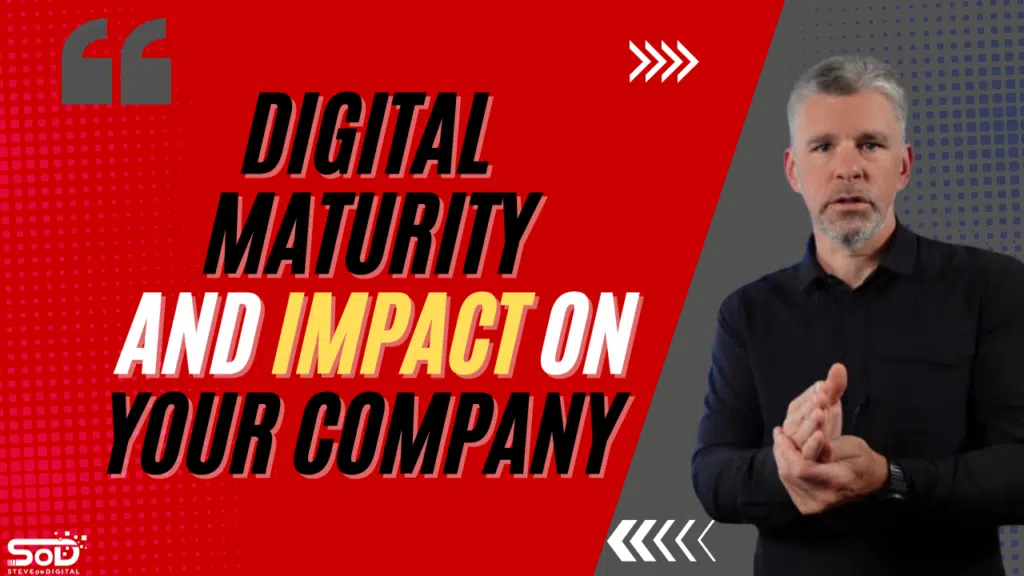
Management support is crucial for successful digital transformation. Without strong leadership backing, even the most well-planned digital transformation initiatives can fail. Management’s involvement ensures that digital technologies are effectively integrated into business processes, aligning with the company’s goals. Digital transformation is not just about technology; it’s about changing how a business operates and delivers value. From setting clear objectives to engaging employees, management plays a key role in driving this change. In my experience, businesses that have strong management support during digital transformation are more likely to achieve their goals and sustain long-term success. I’m Steve, a digital transformation expert with a strong background in electrical engineering, an MBA, and a master’s in Project Management. I excel at helping SMEs navigate the digital landscape with practical insights. Let’s begin! The Role of Management in Digital Transformation Management plays a pivotal role in the success of digital transformation initiatives. From my experience, without strong management support, even the most well-thought-out digital strategy can fail. Management’s involvement is not just necessary; it’s the cornerstone of a successful digital transformation. Importance of Management Support Why is management support so crucial? It’s simple. Management sets the tone for the entire organization. If the management team is fully on board with the digital transformation, it creates a ripple effect throughout the company. Employees are more likely to embrace change when they see that the leadership is committed and invested. Moreover, management support helps in aligning the digital transformation with the overall business strategy, ensuring that every digital initiative contributes to the company’s long-term goals. Statistics back this up. According to a study published in the MIT Sloan Management Review, companies with strong management support for digital transformation are 26% more likely to achieve their digital goals compared to those without such support. This underscores the vital role that management plays in steering the ship during a digital transformation. Management’s Role in Digital Strategy The role of management in digital strategy extends beyond just giving a nod of approval. Management must actively participate in the planning and execution of the digital transformation strategy. This includes setting clear objectives, allocating resources, and ensuring that the digital initiatives align with the company’s business model. I’ve seen companies succeed when their leaders took an active role in digital strategy, from the planning phase to implementation. A successful digital transformation requires management to understand both the potential and the limitations of digital technologies. It’s about making informed decisions that will have a positive impact on the business processes. For instance, during one of my consulting projects, a client’s management team was fully engaged in the digital transformation process, which resulted in a 15% increase in operational efficiency within the first year. This kind of result is only possible when management is actively involved in every step of the digital strategy. Case Study Overview To illustrate the impact of management on digital transformation, let’s look at a real-world example. The Digirati group, as mentioned earlier, is a prime example of a company that has successfully navigated its digital transformation journey thanks to strong management support. In this case, management not only supported the transformation but also drove it by making informed decisions and setting clear business objectives. The result? A significant increase in both revenue and market value, outperforming competitors who invested more in technology but lacked strong management support. This case study clearly shows that management intensity, more than just digital intensity, is the key to a successful transformation. The takeaway here is that without management support, even the best digital technologies will fall short. Understanding Digital Transformation To truly grasp the importance of digital transformation, it’s essential to understand what it entails and why it’s critical for businesses today. What is Digital Transformation? Digital transformation involves integrating digital technologies across every aspect of a business, fundamentally reshaping how the company functions and delivers value to its customers. It’s not just about digitizing existing processes but rethinking and redesigning them to take full advantage of new digital capabilities. This transformation is an ongoing process, not a one-time event, requiring continuous learning and adaptation to stay competitive in the digital age. In my years of working with various businesses, I’ve seen that successful digital transformation requires more than just technology. It demands a shift in mindset across the entire organization. Business leaders must be willing to embrace change and lead by example. This is where management support in digital transformation becomes crucial. Digital Transformation vs. Digitalization It’s important to differentiate between digital transformation and digitalization. Digitalization refers to the process of using digital technologies to change a business model and provide new revenue and value-producing opportunities. Digital transformation, on the other hand, goes beyond digitalization. It involves a cultural change that requires organizations to continually challenge the status quo, experiment, and get comfortable with failure. While digitalization might be the first step, digital transformation is the comprehensive overhaul of a company’s operations and strategy. For example, simply moving paper-based processes online is digitalization. However, when a company rethinks its entire customer experience from the ground up to integrate digital technology at every touchpoint, that’s digital transformation. Common Myths About Digital Transformation There are several misconceptions about digital transformation that I’ve encountered during my work. One of the most common myths is that digital transformation is all about technology. While technology is a significant component, it’s not the only factor. Successful digital transformation also requires a change in company culture, processes, and management support. Another myth is that digital transformation is a one-time project. In reality, it’s an ongoing process that requires continuous innovation and adaptation. Businesses must be prepared to evolve as new technologies emerge and market conditions change. The digital era is constantly evolving, and companies that fail to keep up risk falling behind. Finally, some believe that digital transformation is only for large enterprises. This couldn’t be further from the truth. Small businesses can also benefit greatly from digital transformation by leveraging digital technologies to improve
Guide To Successful Change Management In Digital Transformation | SOD
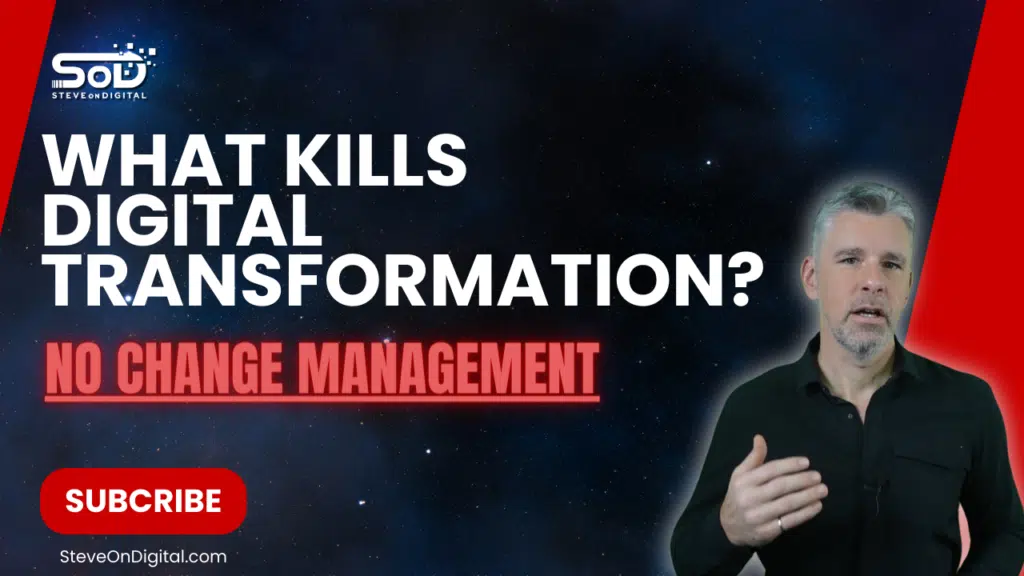
Change management is crucial for the success of any digital transformation. It involves guiding people through organizational changes to ensure smooth implementation and long-term success. Without effective change management, even the best digital transformation initiatives can fail. Digital transformation requires more than just new technology; it demands a shift in how a business operates, its processes, and its culture. By focusing on change management, I can help organizations adapt to new digital tools, overcome resistance, and achieve lasting success in the digital age. I’m Steve, a digital transformation expert with a strong background in electrical engineering, an MBA, and a master’s in Project Management. I excel at helping SMEs navigate the digital landscape with practical insights. Let’s begin! Understanding Digital Transformation Digital transformation is more than just a buzzword; it’s a business imperative. As technology evolves, so too must the way we do business. Digital transformation is the process of incorporating digital technologies across every aspect of a business, leading to significant changes in how the organization functions and delivers value to its customers. But to do this successfully, a structured and systematic approach is essential. The Need for Digital Transformation Let’s face it, the digital era is here, and it’s not waiting for anyone. Companies that fail to embrace digital transformation risk falling behind their competitors. Technological advancements, such as artificial intelligence and cloud computing, are driving businesses to innovate and optimize their operations. Moreover, customer expectations have shifted; they now demand seamless, personalized experiences, which can only be delivered through digital means. This makes digital transformation not just a choice, but a necessity for survival and growth. Key Components of Digital Transformation Digital transformation is a multifaceted process that touches every part of an organization. At its core, it involves adopting new technologies and integrating them into existing business processes. This often requires organizational restructuring, where new business models are developed to better align with the digital tools and strategies being implemented. These changes are not just about technology; they’re about rethinking how your business operates and how you can create more value for your customers. Common Challenges in Digital Transformation Despite its importance, digital transformation is no walk in the park. Many organizations face significant challenges, from resistance to change to technological hurdles. Resistance often stems from fear—fear of the unknown, fear of losing jobs, or simply fear of change itself. Technological challenges, on the other hand, can include anything from integrating new systems with existing ones to ensuring data security in the digital age. These obstacles can derail even the most well-planned digital transformation projects if not addressed properly. The Role of Change Management in Digital Transformation Now, let’s talk about the role of change management in digital transformation. Without a solid change management strategy, even the most promising digital transformation initiatives can fail. Change management is about more than just managing change; it’s about guiding your entire organization through a journey of transformation, ensuring that every employee is on board and that the changes are sustainable. Importance of a Comprehensive Change Management Strategy A comprehensive change management strategy is essential for navigating the complexities of digital transformation. This strategy should include clear communication, continuous support, and a structured approach to managing change. It’s about setting expectations, providing the necessary tools and resources, and ensuring that everyone in the organization understands and embraces the changes. This approach not only helps in achieving a smooth transition but also plays a crucial role in the overall success of the digital transformation. Change Management Versus Project Management It’s important to distinguish between change management and project management, as the two are often confused. While project management focuses on the technical side of implementing new processes and technologies, change management is all about the people. It’s about addressing the human side of change, ensuring that employees understand, accept, and support the new ways of working. Both are essential to digital transformation, but they serve different purposes. Benefits of Effective Change Management Effective change management brings numerous benefits. It increases employee engagement by making them feel involved and valued during the transformation process. This, in turn, leads to higher productivity and better business value. Moreover, a well-executed change management strategy can reduce the risk of failure, ensuring that the transformation is not just a one-time event but an ongoing process that drives continuous improvement and innovation. Developing a Change Management Strategy Creating a successful change management strategy is like plotting a course for a long journey—without a map, you’re bound to get lost. When it comes to digital transformation projects, this strategy becomes your guiding star. I’ve learned firsthand that having a clear plan not only helps to navigate through the complexities but also ensures everyone is on the same page. It’s about setting clear objectives, assessing readiness, and making sure leadership is actively engaged. Setting Clear Objectives and Vision When embarking on a digital transformation, the first step is to set clear objectives and a compelling vision. This isn’t just about where you want to go, but why you’re going there. From my experience, a clear vision acts as the anchor for the entire process. It aligns the team and keeps everyone focused on the end goal. In practical terms, this means defining what success looks like—whether it’s improving key performance indicators (KPIs), enhancing customer experiences, or streamlining business processes. These objectives should be specific, measurable, and tied directly to the overall business strategy. Assessing Organizational Readiness Before diving into any transformation, I always make it a point to assess the organization’s readiness. This involves taking a close look at the existing business processes and the current company culture. Are your processes outdated, or can they be easily adapted to new technologies? Is your company culture open to change, or are you likely to face resistance? Understanding where you stand is crucial for identifying potential roadblocks early on. This assessment isn’t just a one-time check; it’s an ongoing process that should be revisited as the transformation progresses.
People-Process-Technology Analysis: People At The Core
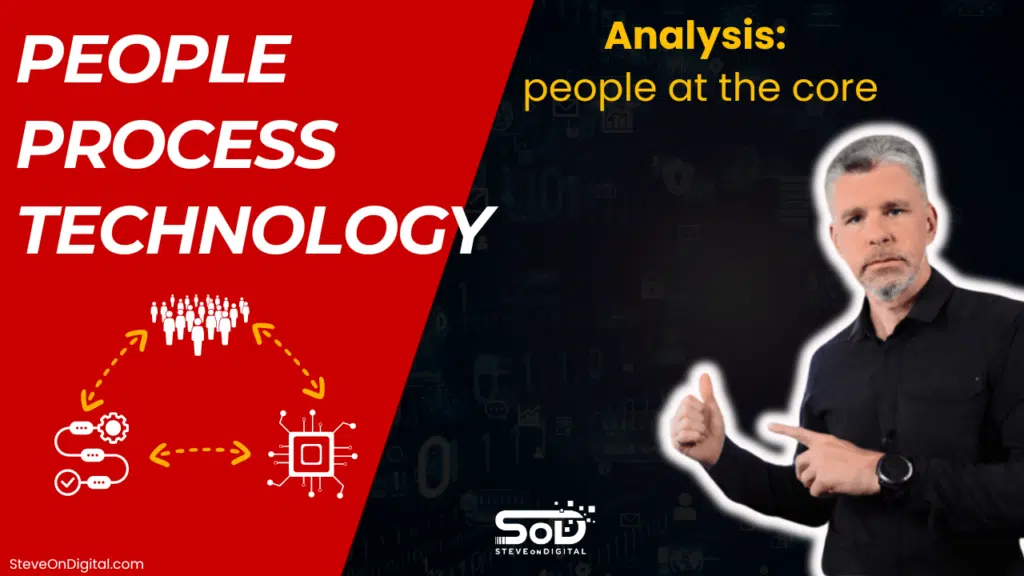
People-Process-Technology (PPT) analysis is crucial for optimizing business operations. It ensures that people, processes, and technology work together seamlessly, enhancing efficiency and success. As a Digital Transformation Specialist with expertise in helping small and medium-sized businesses, I leverage my background in electrical engineering, an MBA, and a master’s in Project Management to guide businesses through the digital landscape. My goal is to assist 1,000,000 business owners and IT directors with practical advice and insights from real-life scenarios. In this blog, I will break down the PPT framework and explain how to use it to transform your business effectively. Understanding The People-Process-Technology Framework The People-Process-Technology framework serves as a strategic approach to managing business operations. This framework helps in identifying the strengths and weaknesses within an organization and provides a roadmap for improvements. People Component The people component focuses on the human resources within an organization. This includes employees’ skills, experience, and engagement levels. It’s crucial to understand that people are not just resources but the core drivers of innovation and productivity. Proper training and continuous development are essential to keep the workforce competent and motivated. For example, when I implemented a new customer relationship management (CRM) system in my business, I ensured that every team member received adequate training. This not only improved their proficiency but also boosted their confidence and job satisfaction. Process Component Processes are the systematic steps and procedures that guide how tasks are performed within an organization. Well-defined processes are critical for achieving consistency, efficiency, and quality. They help in streamlining workflows and eliminating bottlenecks. During one of my projects, I realized that our existing processes were causing delays in project delivery. By conducting a thorough analysis and implementing process improvements, we were able to reduce turnaround times and enhance overall productivity. Technology Component Technology acts as the enabler within the PPT framework. It provides the tools and platforms necessary for automating tasks, improving communication, and enhancing productivity. The rapid pace of technological advancements means that businesses must continuously adapt and integrate new technologies to stay competitive. In my experience, adopting cloud computing solutions significantly improved our data management and collaboration capabilities, leading to better decision-making and faster project execution. The Interplay Between People, Process, And Technology The true power of the PPT framework lies in the interplay between its three components. People use technology to perform processes. In turn, technology can streamline processes and make them more efficient, freeing up people to focus on more strategic tasks. This cyclical relationship creates a dynamic environment where continuous improvement is possible. For instance, by integrating a new project management tool, I was able to automate routine tasks, allowing my team to concentrate on more critical aspects of our projects, ultimately achieving better results. The Core Principles Of People-Process-Technology Understanding the core principles of People-Process-Technology (PPT) is essential for any business striving for success in today’s digital age. This framework helps in achieving organizational efficiency by ensuring that all three components work together harmoniously. Let’s dive into each component of the PPT framework and explore its significance. People Component The people component is the heart of the PPT framework. It’s all about the individuals who work within the organization. Their skills, engagement, and adaptability play a crucial role in driving business success. Skills And Training Proper training is vital for effective technology adoption. When I first introduced a new customer relationship management (CRM) system in my business, I realized that training my team was the key to its success. Without adequate training, even the best technology can become a burden rather than a benefit. Investing in continuous skill development ensures that employees stay up-to-date with the latest technological advancements and can utilize them effectively. Skill Current Proficiency Level Required Proficiency Level Training Needed Customer Service Intermediate Advanced Advanced Customer Service Workshop Project Management Beginner Intermediate Project Management Basics Course Data Analysis Intermediate Advanced Advanced Data Analysis Techniques Employee Engagement Maintaining high levels of employee engagement during technological changes is another crucial aspect. Engaged employees are more productive and motivated. One strategy I found effective was involving my team in the decision-making process when introducing new technologies. This not only made them feel valued but also reduced resistance to change. According to a Gallup report, businesses with highly engaged employees see a 21% increase in profitability. Process Component Processes are the structured methods and practices that guide how work is done within an organization. They are the backbone of operational efficiency and quality. Process Improvement Identifying and improving existing processes is essential for increasing efficiency. In my experience, conducting regular process audits helps in pinpointing inefficiencies and areas for improvement. For example, by streamlining our project management process, we were able to reduce project delivery times by 20%. Continuous improvement should be a core principle in every business. Process KPI Current Value Target Value Improvement Plan Order Processing Cycle Time 48 hours 24 hours Implement automation software Customer Support Response First Response Time 6 hours 1 hour Introduce AI-based support system Inventory Management Stock Accuracy 85% 95% Deploy RFID technology Process Deployment Deploying new processes involves careful planning and integration with existing ones. When I implemented a new project management tool, it was crucial to ensure that it aligned with our current workflows. This required a detailed analysis of our existing processes and strategic planning to integrate the new tool seamlessly. This step is critical to avoid disruptions and ensure smooth transitions. Technology Component The technology component of the PPT framework focuses on the tools and platforms that enable and enhance business operations. It includes everything from software applications to hardware infrastructure. New Technologies Evaluating and implementing new technologies effectively is crucial for staying competitive. I always start by assessing the specific needs of my business and then researching technologies that can address those needs. For instance, adopting cloud computing solutions significantly improved our data management and collaboration capabilities. It’s important to stay informed about the latest technological advancements and choose solutions that offer the most value.

